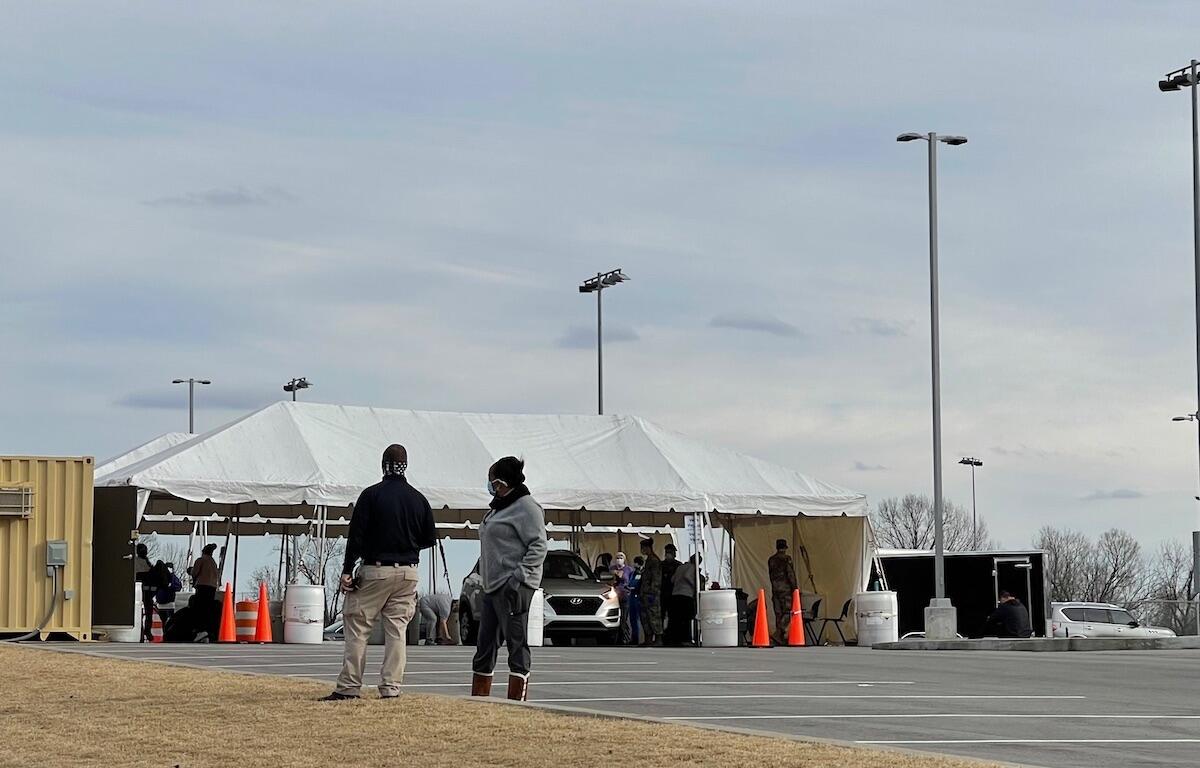CLARKSVILLE, TN (CLARKSVILLE NOW) – Exactly one year ago Friday, March 19, the first COVID-19 case was confirmed in Clarksville. In the time since, our community has faced immense and unimaginable challenges. From panicked toilet paper shortages to mental health crises, the last year has been nothing short of intense.
Now, a year later, three vaccines are available to combat COVID-19, and infection rates are in decline after several months of high case counts and community spread.
At its peak in December and January, the active, daily COVID-19 case count for Montgomery County hovered over 2,000. This month, the active, daily case count has not risen above 400.
But this year our community lost 213 residents to COVID-19, and many more residents lost family, friends and colleagues living in cities across the country.
We talked to some of our neighbors about their experiences over the last year, and the changes to everyday life that the pandemic forced.
Impact on families
The first major change to life in Clarksville, even before the first case was confirmed, was the closing of all public schools on March 13, 2020. They didn’t reopen until the fall of 2020.
Maurice Stegall, 33, said the closures created a scarcity of food in his home due to all of his school-aged children no longer going to school and receiving meals there.
“It was scary for me the first couple of months,” Stegall told Clarksville Now.
Eleven days after the first COVID-19 case was confirmed, on March 31, 2020, the city and county mayors announced a local shelter-at-home order. Gov. Bill Lee then issued a statewide order closing all non-essential businesses.
For Stegall, who was then classified as an essential worker, this could have meant life or death.
“I was an essential worker so I didn’t have the luxury of being quarantined,” Stegall said. His physician told him that with his preexisting conditions, he’d have only a 25% chance of surviving COVID-19 if he were to become infected. “I had to leave a really good job to take a lesser-paying job that was more COVID-safe and -friendly for myself.”
Missing the family
Retired physician Dr. Larry Faust, 74, and his wife used to love dining out, going to movies and having friends over for dinner parties. That ended with the arrival of COVID-19.
The more difficult changes in his life involved family.
“Our son, daughter-in-law and grandkids – we don’t get to go visit them. We spent holidays doing Zoom or FaceTime as opposed to being there in person,” Faust said. But, he said, “face-timing is actually being there, and giving them hugs and things like that.”

Mental health
Marissa England is a 21-year-old communications student at Austin Peay State University. Earlier this year, she had a mild case of COVID-19 for about two weeks, but due to the migraine brought on by it, she was unable to do schoolwork.
The social isolation has been a headache of its own. “It’s kind of made senior year a little less exciting,” England said.
The real impact on England has been being stuck at home, which makes good mental health harder to maintain.
“We’re social human beings; it’s just natural for us to want to talk to each other, so when all we’re doing is schoolwork, it kind of makes you lose motivation.”
England says she’s coping by taking part in Zoom or FaceTime calls.
“You try to do little things with small groups of people.”
Stages of reaction
Lyla Rentschler, 73, said her initial reaction to the pandemic, the closures and day-to-day changes it forced, was anger.
“I was kind of angry and upset that I couldn’t do what I wanted to do,” Rentschler told Clarksville Now. “Then I went through this stage of gratefulness.”
Rentschler was grateful that both of her grown children continued to work throughout the pandemic, and that she was still able to continue seeing her grandchildren.
Dr. Faust said the congregation at his church, Trinity Episcopal, struggled immensely without in-person services and regular face-to-face involvement.
“A lot of people struggled spiritually because they wanted to be in church, and we lost that,” Faust said. “A meeting on Zoom is just not the same as being there in person.”

Looking to the future
There was a lot of good that came out of this past year, too.
“I feel like the pandemic was a blessing and a curse, more so a blessing in bringing everyone together by helping people that are sick,” Stegall said.
Stegall adds that this is something he hopes will continue even after the pandemic ends. “Loving one another, helping one another – if you see a brother or sister in need, don’t be afraid to reach out and help,” he said.
Faust has been helping administer the vaccine, and he agreed that the pandemic has also brought out a lot of good in people.
“I guess one of the positive things that came out of it, and in giving COVID vaccines, is getting to meet people and seeing how grateful they were to get the vaccine,” Faust said. “We saw a lot of people who they gave up their time to help their neighbors and elderly friends.”
Now, there’s a lot to look forward to as the case numbers drop.
“What I’m looking forward to the most is seeing the grandkids, and hugging and playing with the grandkids, and our kids too,” Faust said.
“Honestly, I’m just ready to see people again,” England said.
As for Rentschler, her life post-COVID has already begun.
“I got the vaccine; 20 days later I got the second vaccine; 14 days later I was on a plane to Las Vegas.”



